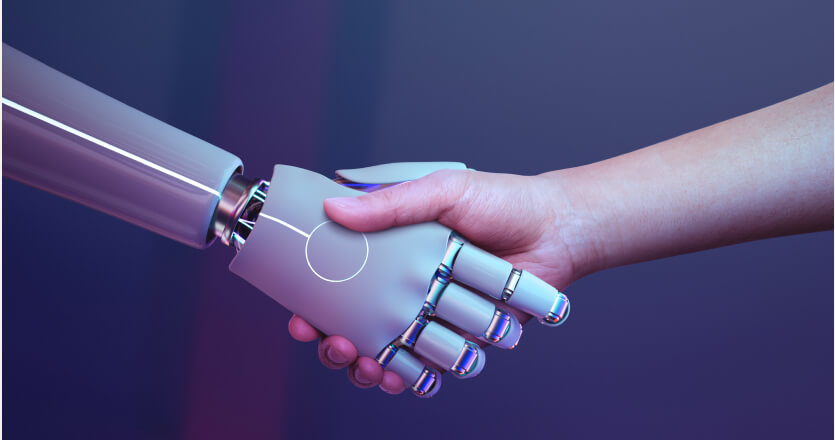The amount of information that can be accessed by consumers today is both a blessing and a curse.
Due to the overwhelming volume of information and the numerous options available, people often struggle to fully grasp what is available. Artificial Intelligence can greatly assist in how content is produced and experienced, particularly in this area.
A recent study has shown that using data for relevant suggestions is much more efficient, highlighting that appropriate content has an 80% higher chance of capturing users’ attention. AI has propelled the movement of content customization, enhancing user experiences and fostering more enjoyable, informative, and productive exchanges.
The growth of AI in content personalization
Personalization in content is not a new concept. However, past constraints on personal customizations included a lack of resources, limited data, and significant time spent on manual business intelligence tasks. Market strategies have long focused on finding better ad avenues to target individual consumer gaps. In other words, the introduction of AI has enabled marketers to push advertisements and influence major decision-makers at the press of a button.
AI algorithms do not simply analyze the target market superficially—they delve into deeper portfolios, such as spending habits and preferences, to form concrete user profiles. These profiles are then refined and shared with users in real-time, enabling better interaction.
The role of AI in delivering hyper-personalized content
User data and insights analytics: With artificial intelligence, enormous amounts of information can be analyzed faster and more easily than human analysts, uncovering new user preference patterns that might otherwise go unnoticed. These insights make it possible to forecast future behavior and develop stronger, more effective personalized content strategies. For example, in the marketing and sales realm, companies that integrate AI and machine learning into their strategies report a 30% increase in marketing effectiveness and a 20% growth in sales, according to a report from Accenture.

Dynamic, personalized content creation: Some news sites use dynamic, AI-generated content to provide users with customized news feeds that display information based on their preferences and reading history. This ensures that the most relevant items are featured, maximizing user engagement and the time they spend on the site.
NLP – Natural language processing: NLP enables AI to understand and produce text in human language. This partly explains the use of AI in chatbots and virtual assistants for tailored experiences. For example, a customer service AI chatbot can embed a user’s previous conversations and the context of their interactions to provide more accurate responses. According to recent forecasts by Gartner, by 2025, 85% of customer interactions will be handled without a human agent, largely thanks to advancements in NLP.
Personalized content recommendation engines: One of the most well-known applications of AI in content delivery is the recommendation engine. AI systems employed by platforms like Netflix, Amazon, and Spotify suggest content to users based on their past behaviors and preferences. These recommendations improve over time as the AI learns more about the user, creating a progressively better experience. For instance, Netflix attributes 80% of its content consumption to personalized recommendations, significantly enhancing user engagement.
Analytics in prediction: Predictive analytics, powered by AI, estimate user behavior based on historical data. This capability is particularly valuable for companies running personalized marketing campaigns. Knowing how a user is likely to behave enables more targeted and efficient advertisements. A recent report found that organizations leveraging predictive analytics tools are 2.9 times more likely to exceed the industry’s benchmark for revenue growth acceleration.
The results of using AI in content delivery
- Enhanced user engagement: Personalized content keeps users engaged by providing information and recommendations relevant to their interests. One study found that 71% of consumers feel frustrated when a shopping experience is impersonal, underscoring the importance of personalization in user engagement.
- Increased conversion rates: Tailored AI-generated content can lead to higher conversion rates, as users are more likely to engage with and act on content marketing that resonates with them.
- Improved customer satisfaction: Delivering content that meets individual preferences can increase customer satisfaction and loyalty. A survey by Accenture shows that 91% of consumers are more likely to shop with brands that provide relevant offers and recommendations.
- Efficiency and scalability: AI enables businesses to deliver personalized experiences at scale, which would be impossible with manual methods. McKinsey reports that companies can reduce costs by up to 20% by using AI for personalization.
Three challenges and considerations for using AI to deliver personalized content
With thoughtful collaboration between humans and AI, the future looks promising. Groundbreaking advancements and improved user experiences are set to totally transform the way that we interact with content, but this experience is not without its challenges.
- Privacy and data security: Using personal data to drive AI algorithms raises privacy and data security concerns. Businesses must ensure they comply with regulations such as GDPR and CCPA and prioritize protecting user data.
- Bias and fairness: AI systems can inadvertently perpetuate biases present in the data on which they are trained. It’s crucial to continuously monitor and address any biases to ensure fair and equitable content delivery.
- Transparency and trust: Users should be informed about how their data is being used and the benefits they receive from AI-driven personalization. Transparency is key to building and maintaining trust.

Five predictions for AI in content creation
The future of AI in personalized content delivery is bright. As AI technologies continue to advance, the level of personalization will become even higher.
Here are a few trends to anticipate:
- Hyper-personalization: AI will deliver highly personalized content by analyzing user data to understand preferences and behaviors, enhancing user engagement and satisfaction.
- Enhanced creativity: AI-powered tools will push creative boundaries, aiding in generating unique storylines and visually captivating graphics, resulting in more engaging content.
- Improved distribution: AI algorithms will refine content distribution strategies to ensure the right content reaches the right audience at the right time, optimizing reach and engagement.
- Integration with emerging technologies: AI will increasingly integrate with other emerging technologies, such as augmented reality (AR) and virtual reality (VR), to create immersive personalized experiences.
- Enhanced interactivity: AI will enable more interactive and engaging content, such as personalized video content that adapts in real-time based on user interactions.
Looking to the future: How personalized content will change the digital landscape
While AI promises exciting advancements, challenges like ethical considerations, algorithmic biases, and the need for human oversight remain crucial. However, with thoughtful collaboration between humans and AI, the future looks promising with groundbreaking advancements and improved user experiences.
Advancements in machine learning algorithms and data analytics enable AI to refine content recommendations, tailoring them to individual preferences and behaviors. This enhances user experiences and opens new avenues for businesses to connect with their audiences, fostering stronger relationships and building increased brand loyalty.
AI-powered personalized content delivery transforms the digital landscape, allowing businesses to create highly engaging and relevant user experiences that meet and exceed customer expectations. This drives engagement, satisfaction, and loyalty while ensuring a balance between innovation and ethical use in the digital age.
Yodeck is dedicated to exploring how AI can revolutionize user experiences across industries. Our team is actively investigating these concepts. In the meantime, visit our blog to discover digital signage use cases, effective strategies, and more!
